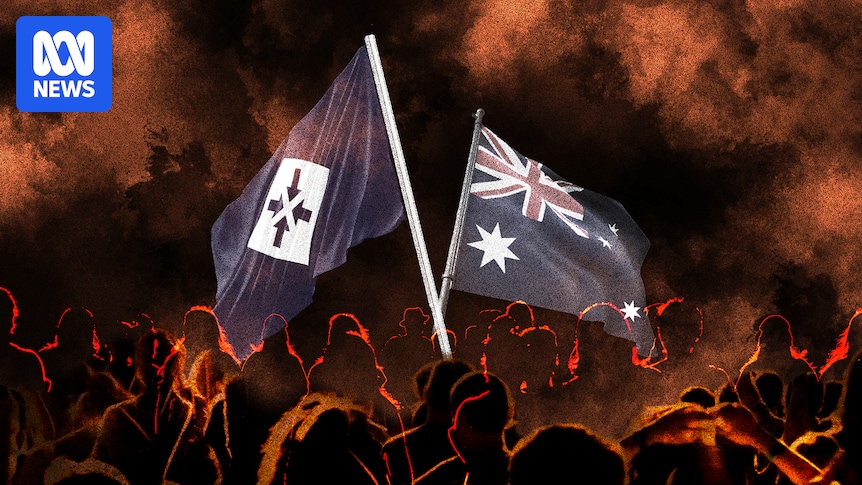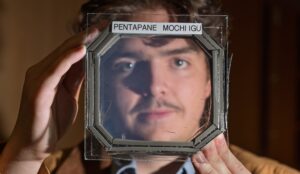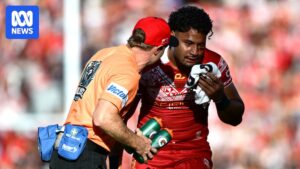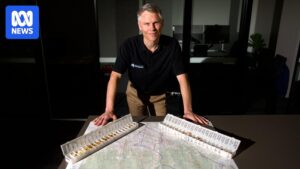
In the midst of a scorching Californian summer, Dallas Humber found herself deeply unsettled. She was aware of an Australian individual who, she claimed, was prepared to execute a mass casualty attack but ultimately did not follow through. “It pained us all to see what happened in Australia the other day,” the US woman wrote, referring to the man as a “would-be saint” in a call to arms for her Neo-Nazi followers to incite violence.
Just days before her message, Australian authorities arrested a man and charged him with a terror-related offense, among other charges. It soon emerged that authorities believed the man was allegedly linked to Ms. Humber’s far-right terrorist organization, Terrorgram. While the extent of his involvement with the group remains to be clarified in court, what is evident is that Australian Neo-Nazis have long been inspired by overseas organizations declared as terrorist groups in Australia.
Global Influence on Australian Neo-Nazis
An investigation by the ABC has revealed direct interactions between members of Australian white supremacist groups and their overseas counterparts, including discussions about emulating their structures and activities. Despite these connections, no Australian-based far-right group has been officially sanctioned.
This development follows the rise of Australia’s largest Neo-Nazi group, the National Socialist Network (NSN), which is attempting to establish itself as a political movement for Australians with fringe views on race, identity, and immigration. The group has become increasingly emboldened, with members participating in several anti-immigration rallies across Australia last weekend. At the Melbourne rally, some members allegedly engaged in violence during the main event and reportedly assaulted members of a First Nations protest camp, injuring four individuals.
Calls for Action and Regulation
In the wake of these rallies, several multicultural organizations have called for the group to be banned. Australia’s Race Discrimination Commissioner, Giridharan Sivaraman, stopped short of joining those calls but emphasized that Australian Neo-Nazis pose a threat to social cohesion and highlighted the need for better regulation of social media platforms.
“These groups are inherently racist, their beliefs are fundamentally racist, they believe in white supremacy,” Mr. Sivaraman stated. “Any such group is going to threaten the fabric of a society. The connections of these groups show that groups here can be subject to global influence and I think that’s made particularly possible by social media where hate seems to travel completely unobstructed.”
Leaked Records and Historical Parallels
The NSN, led by Thomas Sewell and Jacob Hersant, has roots in previous far-right extremist groups, including Antipodean Resistance. These groups emerged from the forums of the now-defunct Neo-Nazi website Iron March. Overseas, the website’s users formed groups such as the National Socialist Order, also known as Atomwaffen Division, and the Sonnenkrieg Division, which splintered from the UK group National Action. These overseas groups have been banned in Australia since 2021.
Even when the federal government declared Terrorgram a terrorist organization in June, it described the group as having “its roots in the Iron March forum.” In 2019, a large cache of leaked private messages between Iron March users was published on an online archive platform, providing a valuable snapshot of how Australian Neo-Nazis forged connections and took inspiration from counterparts overseas. These bonds helped form the basis for Australia’s modern Neo-Nazi movement, including the creation of the Melbourne-based Antipodean Resistance, whose early members included a young Hersant.
Inside the Far-Right Playbook
The propaganda efforts of Australian far-right groups have focused on recruitment and notoriety. Kristy Campion, a terrorism expert at Charles Sturt University, notes that the group’s strategy serves two purposes: driving recruitment and confecting broad support.
“This goes towards their strategy of achieving some form of legitimacy,” Dr. Campion explains. “I don’t think what we’re currently seeing from the Australian extreme right is in any way original or unique.”
Dr. Campion asserts that the group is following “a very well-trodden path” but with a “local tone and flavor.” In private chats, Australian members of Antipodean Resistance have boasted about being featured on news websites and expressed a desire for television coverage, aiming to provoke outrage and emulate methods used by National Action in the UK.
Emergence of New Far-Right Groups
Since the shutdown of Iron March, members of the Australian far-right have established and disbanded a series of groups, culminating in the formation of two key organizations: the National Socialist Network and the European Australian Movement. During a bail hearing in 2021, a Victorian counterterror investigator described the European Australian Movement as a traditional nationalist organization designed to give members a sense of camaraderie and introduce them to white supremacist and Neo-Nazi ideology.
Meanwhile, the NSN was established as the movement’s hardline fascist political wing, responsible for activism in the form of graffiti, stickering, posters, and, in recent times, marches and flash demonstrations. Court records from a South Australian case linked to neo-Nazis last year reveal that NSN membership has since become more structured.
“All we ask of you was that you help build our collective, that you attend meetings, that you read these books, that you come train with us, that you pay your dues, that you help with activism, that you lend your help to the wider community when needed,” Sewell stated to members in a chat message tendered in court.
Implications and Future Outlook
The recent anti-immigration marches have intensified debates over how authorities should handle far-right groups. Erin Chew from the Asian Australian Alliance reported being racially abused during Melbourne’s anti-immigration march, with protesters calling her a “traitor” and a “Chinese spy.” She believes the NSN poses a real threat and has called for its ban.
“Their aim is to terrorize people that don’t agree with them and do not look like them,” Ms. Chew asserts. “Such groups could encourage and embolden other people who may just hold ignorant views because they’re normalizing this racism, and that is extremely dangerous.”
Vasan Srinivasan from the Confederation of Indian Australian Associations echoed Ms. Chew’s call for action against groups affecting public peace. Meanwhile, Noel Zihabamwe from the African Australian Advocacy Centre expressed concern and anxiety following the anti-immigration march and the actions of Australian Neo-Nazis.
The Department of Home Affairs has refrained from commenting on the NSN but stated it is monitoring groups that may pose a threat to Australians. Victoria Police also emphasized its commitment to closely monitoring far-right groups and taking action where necessary.
John Roose, an extremism expert at Deakin University, highlighted that extreme far-right groups often straddle the line between legal and illegal activities to remain beyond the reach of law enforcement. However, he warned that the most significant risk comes from zealots on the fringes of these groups.
“People at the margins who might not necessarily be members of the groups but draw direct inspiration from them are often more likely to employ extremist violence and terrorism,” Dr. Roose explained.
The Australian Security Intelligence Organisation (ASIO) declined to comment on specific links to banned overseas groups but pointed to comments made by its Director-General of Security, Mike Burgess, in his annual threat assessment regarding the threat of extremist groups.
“We expect nationalist and racist violent extremists to continue their efforts to ‘mainstream’ and expand their movement,” Mr. Burgess stated in February. “They will undertake provocative, offensive, and increasingly high-profile acts to generate publicity and recruit. While these activities will test legal boundaries, the greatest threat of violence comes from individuals on the periphery of these organized groups … the most likely perpetrator of a terrorist attack is a lone actor.”
As Australian authorities and communities grapple with the rise of far-right extremism, the focus remains on preventing violence and ensuring social cohesion in a diverse nation.







